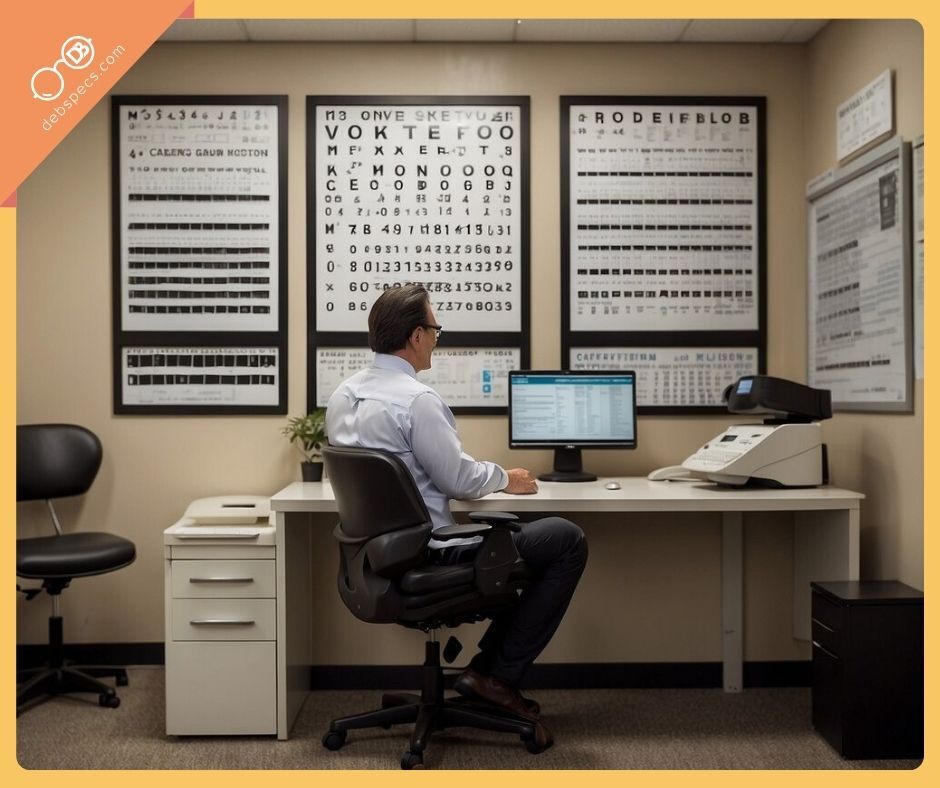
How Much Does an Eye Exam Cost: Factors Affecting Price
Posted by Team Debby on 27th Jan 2024
Regular eye exams aren’t just about updating your prescription—they’re a key part of protecting long-term eye health. But if you’ve ever tried to figure out the cost of an eye exam, you know it can feel confusing. Prices vary widely depending on where you go, what type of exam you need, and whether you have insurance.
This guide breaks it down clearly so you know what to expect before you book your next appointment.

What Affects the Cost of an Eye Exam?
Several factors influence how much you’ll pay for an eye exam:
- Location – Exams in cities or high-cost areas tend to be pricier.
- Type of provider – Retail chains often charge less than private optometrists or ophthalmologists.
- Type of exam – A quick vision screening costs less than a full comprehensive exam.
- Insurance coverage – Vision insurance can reduce your out-of-pocket cost significantly.
- Specialized services – Contact lens fittings, diagnostic testing, or medical eye exams usually add to the bill.
Applying Exam Insights Beyond the Price Tag
As the article explains, understanding what goes into the cost of an eye exam helps you see it as an investment in clearer, more comfortable vision—not just a line item. Once you know your current prescription and focusing needs, readers designed with accurate magnification and stable optics can help you make the most of those exam findings in everyday life. The options below show how these insights translate into practical support for your close-up tasks.
Average Cost of Eye Exams
Here’s a general breakdown of what you can expect to pay without insurance:
- Retail chains & optical stores: $50 – $70
- Private practice optometrists: $100 – $150
- Ophthalmologists (specialists): $150 – $250+
With vision insurance, a routine exam is often reduced to a $10–$40 copay. Always check your plan details to avoid surprises.

Health Insurance vs. Vision Insurance
Not all insurance plans treat eye care the same way. Here’s how they typically differ:
- Health insurance – Usually covers eye exams only if they’re deemed medically necessary (for example, if you have diabetes or are at risk for glaucoma). Routine exams may not be included.
- Vision insurance (like VSP, EyeMed, Humana Vision) – Designed for routine care. Typically covers:
- Yearly exams (with a copay)
- Eyeglass frames and lenses
- Contact lenses (allowances or discounts)
Pro tip: Vision insurance plans often pay for themselves if you get exams and glasses yearly.

Types of Eye Exams
Not all exams are created equal. Here are the main categories:
- Basic eye exam – Checks vision clarity and updates your glasses or contact lens prescription.
- Comprehensive exam – Includes tests for eye health, such as glaucoma pressure checks, retinal exams, and screening for diseases like cataracts or macular degeneration.
- Specialized exams – Designed for specific needs, such as diabetic eye exams, pediatric testing, or contact lens fittings.

Choosing the Right Provider
Your choice of provider also affects both cost and experience.
Optometrists (ODs):
- Handle routine eye exams, prescriptions, and treatment of minor conditions.
- Best for regular eye care and eyewear needs.
Ophthalmologists (MDs/DOs):
- Medical doctors specializing in eye diseases and surgery.
- Best if you have serious eye health concerns or need surgical care.
Retail chains vs. independent practices:
- Retail: Convenient locations, extended hours, lower prices.
- Independent: More personalized care, long-term provider relationships, but usually higher cost.

Additional Costs to Keep in Mind
Your exam fee isn’t always the final bill. Extra expenses may include:
- Glasses – Frames range from budget to designer, with lenses starting at $40 and going up to $250+ for progressives.
- Contact lenses – Basic disposables start around $22–$26 per box; specialty lenses cost more.
- Special coatings – Anti-reflective, blue light, or scratch-resistant coatings add to lens pricing.
- Deals & discounts – Many providers offer exam + glasses bundles or BOGO (buy one, get one) deals.

Why Regular Eye Exams Matter
Eye exams aren’t just about clear vision—they help catch health problems early. Conditions like glaucoma, macular degeneration, and cataracts often show no symptoms in their early stages. Regular checkups mean:
- Early detection and treatment
- Better management of age-related changes
- Peace of mind about your overall eye health

TL;DR (Quick Takeaways)
- Eye exam cost without insurance: $50–$250, depending on provider and location.
- With vision insurance: Usually $10–$40 copay.
- Retail vs. private practice: Retail is cheaper; private practices offer more personalized care.
- Add-ons: Glasses, contacts, and special testing can raise the total price.
- Why it matters: Exams protect both your vision and overall health.
Myths vs. Facts
Myth: Eye exams are only needed if you notice vision changes.
Fact: Many eye diseases show no symptoms at first—regular exams are preventive care.
Myth: All insurance covers routine eye exams.
Fact: Health insurance usually doesn’t cover them unless medically necessary. Vision insurance is designed for routine care.
Myth: Retail eye exams are lower quality.
Fact: Retail optometrists are licensed professionals; the main difference is in pricing and level of personalized care.
FAQs About Eye Exam Costs
Q: How much is an eye exam at Walmart?
A: Typically $60–$90, depending on location and exam type.
Q: What’s the average cost at Costco?
A: Around $70–$100, though it varies by provider.
Q: How much does an ophthalmologist charge?
A: Usually $150–$250+, since they perform more specialized testing.
Q: How do costs differ by region?
A: Urban areas often charge $200+; rural areas may be closer to $50–$80.
Q: How much is a private optometry exam without insurance?
A: Typically $100–$150, though it depends on services provided.
✅ Bottom line: Eye exams are an investment in your vision and overall health. Whether you choose a retail chain, an independent optometrist, or a specialist, knowing the typical costs—and how insurance factors in—helps you plan with confidence.


